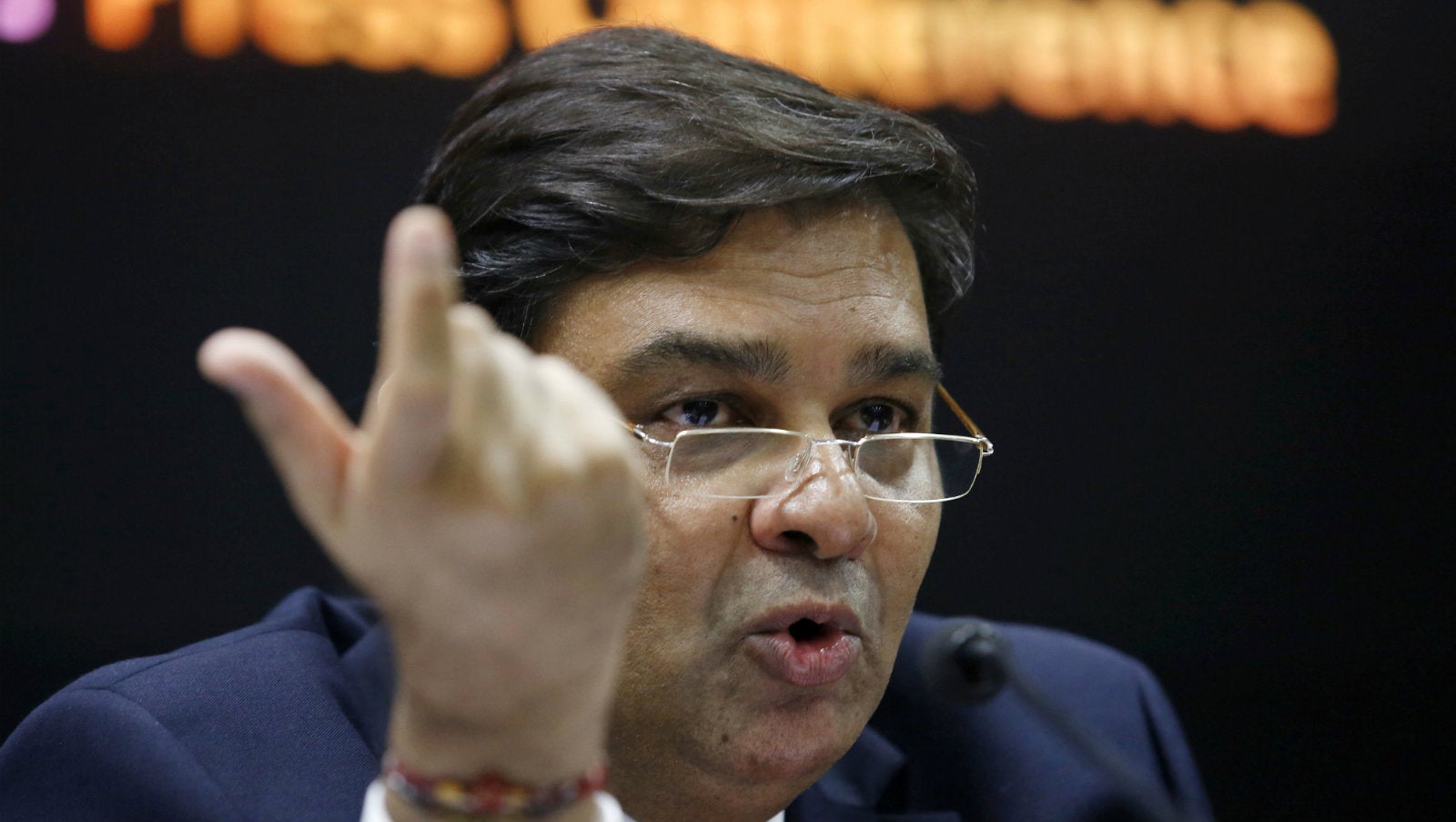India’s government and central bank are squabbling again
Another shot has been fired in the long-running tussle over interest rates between India’s central bank and the government.


Another shot has been fired in the long-running tussle over interest rates between India’s central bank and the government.
This time, Ashima Goyal, a member of the prime minister’s economic advisory council, criticised the governor Urjit Patel-led Reserve Bank of India (RBI) for not having “the correct view of the economy.”
By keeping rates high, the RBI has “imposed a high output sacrifice. They believe inflation will rise, but you know their predictions of inflation have always been overestimated,” Goyal said in an interview with Bloomberg published on Dec. 04.
The comments came a day before the central bank’s monetary policy committee’s (MPC) meeting to review the policy rates to be announced on Dec. 06. The RBI is widely expected to not cut rates this time either, as growth has rebounded and inflation concerns persist. The central bank has kept an inflation target of 4%, plus or minus 2%. However, due to rising prices, inflation has inched up close to its mid-range target of 4%. In fact, retail inflation was at a seven-month high in October.
An email sent to the RBI remained unanswered.
The ongoing feud
This isn’t the first time the central bank and the government have clashed over policy rates. In fact, based on this friction, previous RBI governors have often expressed doubts over the banking regulator’s autonomy.
The government’s argument is that lower rates can translate into a lower cost of borrowing for corporates and retail customers, thereby boosting growth. However, interest rates aren’t the only factor for robust growth, which also requires structural reforms, increased government spending, and better global economic conditions. Yet, the government is often known to nudge the central bank into reducing the cost of borrowing.
Raghuram Rajan, Patel’s predecessor who held office between 2013 and 2016, often didn’t see eye-to-eye with the Narendra Modi government on this issue and was blamed for stalling economic growth by keeping interest rates high.
India’s central bankers have faced a similar predicament for years now. “There was constant and decidedly unhelpful friction between the ministry of finance, under both Pranab Mukherjee and later Chidambaram, and the Reserve Bank on what the government saw as the Reserve Bank’s unduly hawkish stance on interest rates, totally unmindful of growth concerns,” former RBI governor Duvvuri Subbarao, who led the central bank between 2008 and 2013, wrote in his book Who moved my interest rate?.
Before the policy meeting in June this year, finance ministry officials had summoned the MPC in what was believed to be an attempt to coax the committee to cut rates. However, asserting their independence, all MPC members, including the RBI governor himself, refused to attend the meeting. The MPC has six members, three independent experts who were appointed by the government and the remaining from the RBI. This committee was formed to ensure that the RBI could take a broader view on rate cuts, ending the earlier regime where the central bank’s governor was the final authority on this subject.
This time, too, there is no reason for the RBI to succumb to arm-twisting.
“As a central bank, you need to be extremely cautious about inflation and, therefore, it’s very natural for the RBI to be more conservative about inflation,” argued an economist with a private sector bank, requesting anonymity. “Global commodity prices and oil prices are high, which can further fuel inflation. Also, there is concern about the government’s fiscal position considering tax collection under the goods and services tax. Therefore, any cautious institution will hold on to rates.”